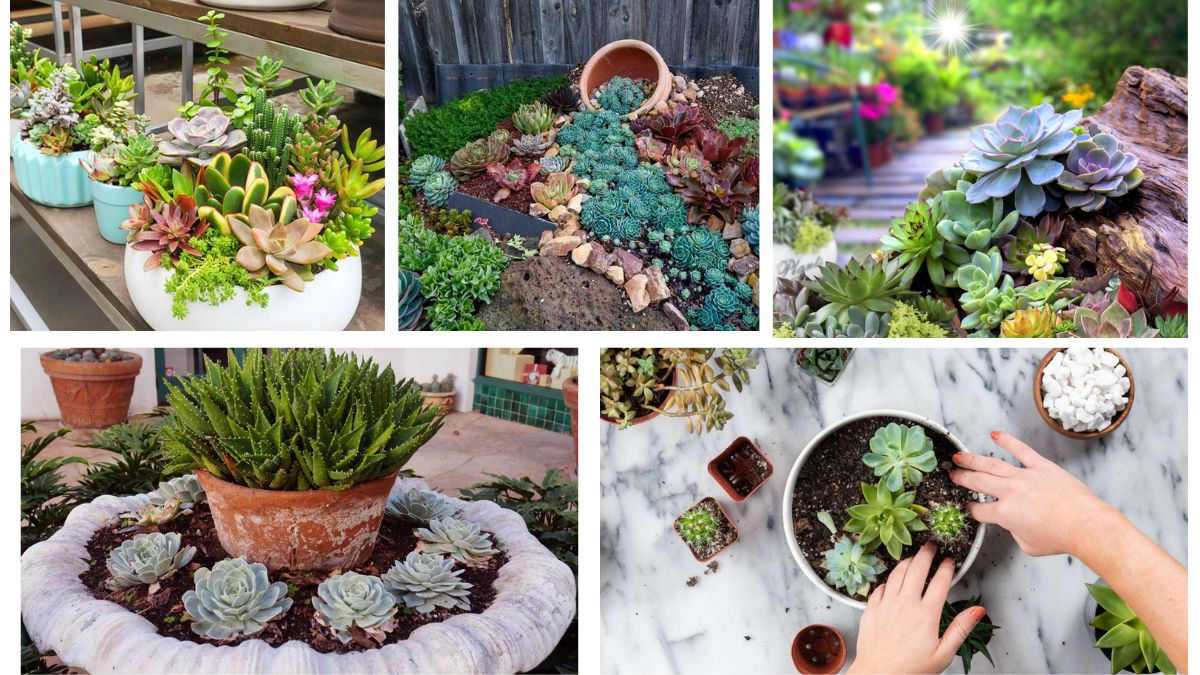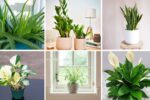Succulents have captivated plant lovers and gardeners worldwide for their unique textures, vivid colors, and incredible resilience. Whether you live in a small apartment, have a sunny windowsill, or maintain a sprawling garden, succulents offer endless design possibilities. One of the most creative and rewarding ways to showcase these fascinating plants is by crafting a beautiful succulent arrangement.
In this guide, we’ll explore how to create a visually stunning, healthy, and lasting succulent display — covering plant selection, design principles, container choices, soil preparation, care tips, and styling ideas.
Why Choose a Succulent Arrangement?
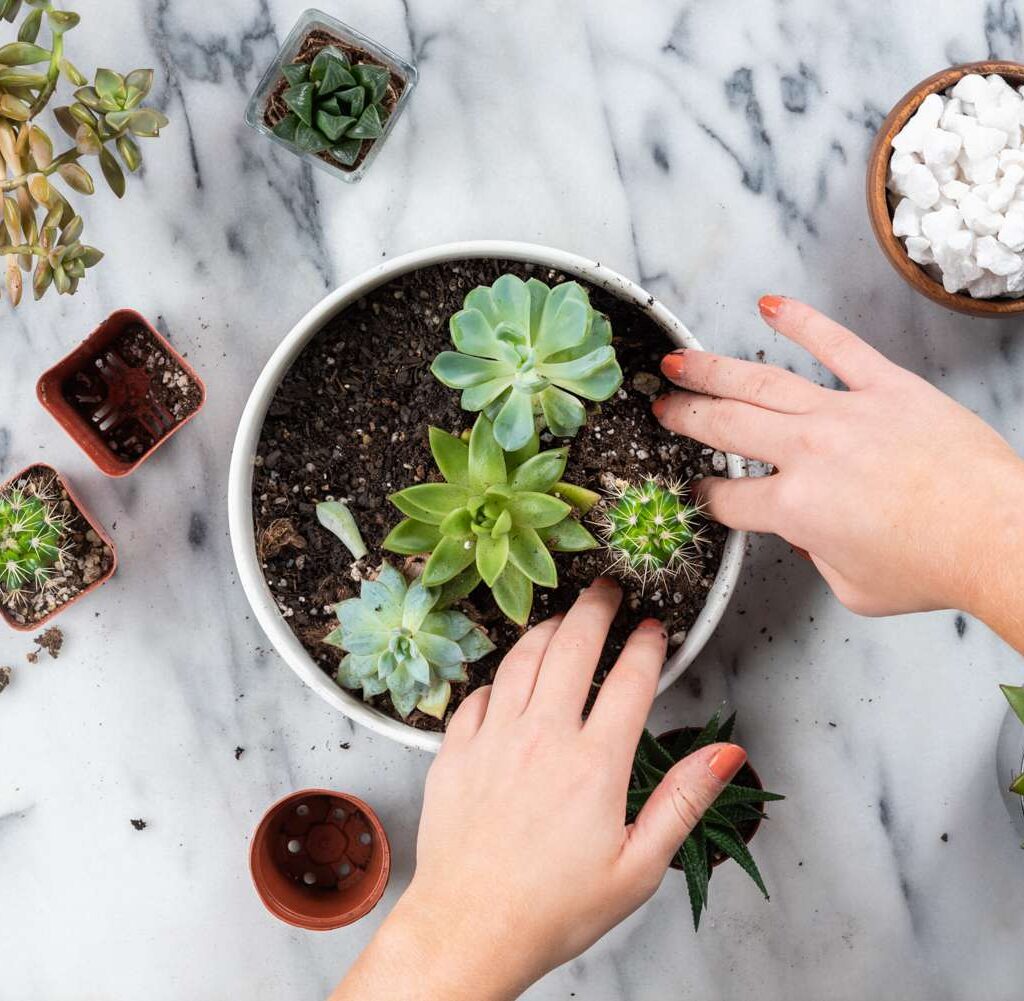
Succulent arrangements are not just decorative — they offer several benefits:
- Low-maintenance beauty for both indoor and outdoor spaces.
- A wide variety of shapes, colors, and textures.
- Perfect for small spaces, balconies, patios, and tabletops.
- Drought-tolerant, requiring minimal watering.
- Customizable to match seasonal or personal aesthetics.
Creating your own arrangement is also a relaxing, creative hobby that allows you to experiment with nature-inspired art.
Selecting the Right Succulents for Your Arrangement
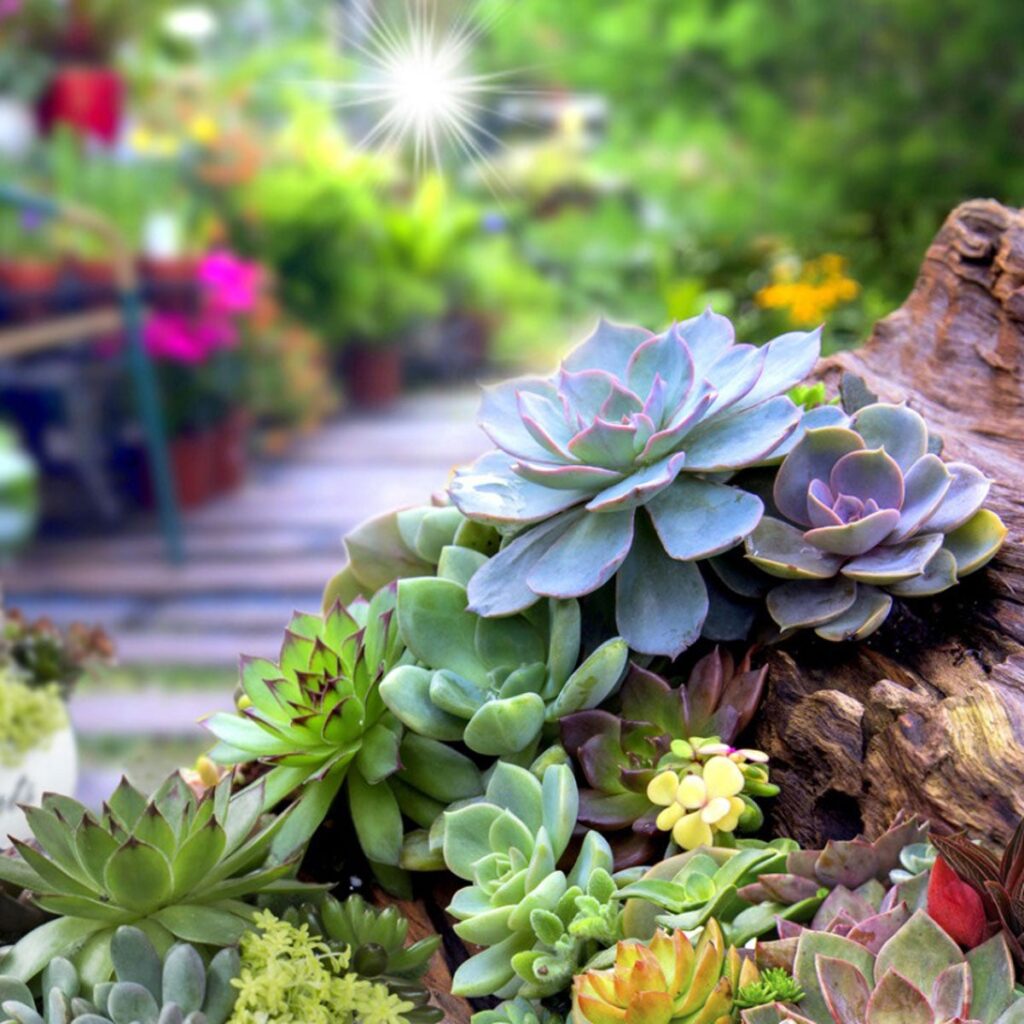
A visually balanced arrangement starts with choosing the right mix of succulents. When selecting, consider:
- Size: Varying heights and spreads create visual interest.
- Color: Mix shades of green, red, blue-gray, and purple for contrast.
- Shape: Combine rosettes, spiky, trailing, and columnar varieties.
Popular succulents for arrangements include:
- Echeveria (rosettes with pastel colors)
- Sedum (low-growing, trailing varieties)
- Crassula (thick, stacked leaves)
- Haworthia (spiky, striped leaves)
- Aloe (upright, fleshy leaves)
- Kalanchoe (bold foliage and flowers)
- Graptopetalum (small, clustered rosettes)
- Senecio (trailing varieties like String of Pearls)
Design Principles for a Stunning Arrangement
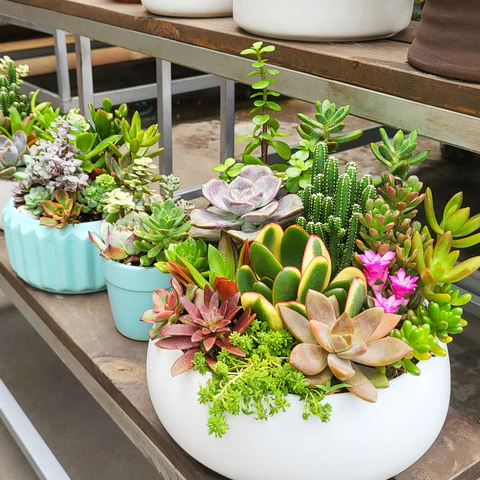
Apply basic garden design techniques to your succulent display:
1. Thriller-Filler-Spiller Technique
- Thriller: Tall or visually striking plant as the focal point (e.g., Aloe or Crassula).
- Filler: Medium-sized, rosette or mounding succulents (e.g., Echeveria, Kalanchoe).
- Spiller: Trailing varieties that cascade over the container’s edge (e.g., Sedum, Senecio).
This classic planting formula ensures balance and visual flow.
2. Color Harmony
- Combine complementary colors like purple and green or blue-gray and soft pink.
- Or use a monochromatic scheme with varying textures.
3. Texture and Shape
- Pair spiky, linear succulents with smooth, rounded rosettes.
- Mix trailing plants with upright forms for layered depth.
Choosing the Right Container
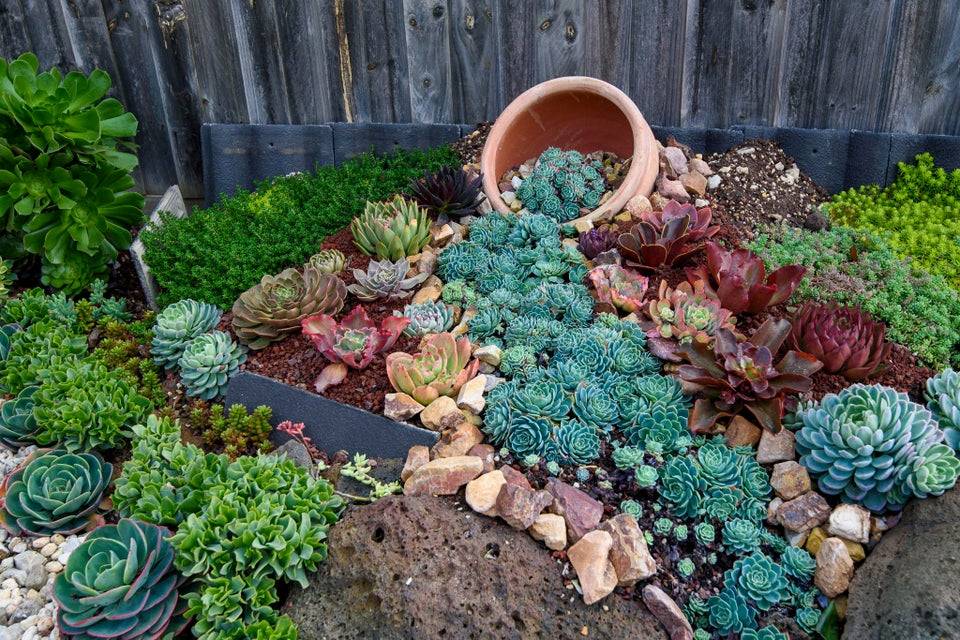
The container sets the tone for your succulent arrangement and affects plant health.
Ideal containers should:
- Have a drainage hole to prevent water-logged soil.
- Be made of materials like ceramic, terracotta, stone, or wood.
- Match the arrangement’s style — rustic, modern, vintage, or eclectic.
Creative container ideas:
- Shallow bowls
- Driftwood planters
- Hanging baskets
- Vertical wall frames
- Repurposed teacups or tin cans
Preparing the Soil Mix

Succulents need a fast-draining, lightweight soil to prevent root rot.
Ideal succulent soil mix:
- 2 parts cactus or succulent potting mix
- 1 part perlite or coarse sand
- Optional: add a small amount of pumice or crushed gravel for extra drainage
Tip: Avoid regular garden soil, which retains too much moisture for succulents.
How to Arrange Your Succulents
1. Start with the Thriller
Plant your focal-point succulent first, slightly off-center for a natural look.
2. Add Fillers
Surround the central plant with medium-sized succulents, spacing them to allow for growth while ensuring a full appearance.
3. Place the Spillers
Add trailing varieties along the container’s edges, allowing them to drape gracefully.
4. Adjust Heights
Vary plant heights by adjusting planting depth or using rocks beneath the soil to elevate specific succulents.
5. Finish with Decorative Top Dressing
Add a layer of small pebbles, gravel, or sand on the soil’s surface to:
- Prevent soil splashing during watering
- Enhance visual appeal
- Deter pests
Watering and Care Tips
Succulent arrangements are famously easy to care for, but a few guidelines ensure they thrive:
- Water deeply but infrequently. Allow the soil to dry completely between waterings.
- Indoor arrangements: Water every 2–4 weeks depending on light and humidity.
- Outdoor arrangements: Adjust frequency based on weather — typically once a week in hot, dry climates.
- Avoid letting succulents sit in standing water.
- Remove dead leaves to maintain airflow and reduce pest risks.
- Rotate the arrangement occasionally for even sunlight exposure.
Lighting Requirements
Succulents crave bright, indirect light.
- Indoors: Place near a sunny, south- or west-facing window.
- Outdoors: Position in partial to full sun but acclimate slowly to avoid sunburn.
Warning Signs:
- Stretching (etiolation): Indicates insufficient light.
- Scorched leaves: Sign of too much direct, intense sun.
Creative Succulent Arrangement Ideas
1. Succulent Wreath
Perfect for doorways or as a table centerpiece, planted into a moss-covered wire frame.
2. Vertical Succulent Wall
A living wall display using a wooden frame or hanging planter with shallow soil pockets.
3. Fairy Garden
Combine miniature succulents with tiny accessories like bridges, cottages, and figurines for a whimsical effect.
4. Terrariums
Enclose small succulents in open glass containers with layers of sand, pebbles, and soil.
5. Hanging Ball Planter
Wire spheres filled with soil and trailing succulents like String of Pearls or Burro’s Tail.
Common Mistakes to Avoid
- Overcrowding plants — allow room for growth.
- Using containers without drainage — leads to rot.
- Overwatering — succulents are drought-tolerant and prefer dry spells.
- Insufficient light — causes leggy, weak growth.
- Regular potting soil — retains too much moisture.
Conclusion
Creating a beautiful succulent arrangement is an enjoyable, rewarding project that combines art, horticulture, and personal expression. By understanding plant selection, design principles, soil preparation, and care requirements, anyone — from beginner to expert gardener — can craft a stunning, low-maintenance display.
With their minimal care demands, varied textures, and year-round appeal, succulents continue to be a favorite for indoor décor and garden accents. Whether on a tabletop, patio, or vertical wall, a thoughtfully designed succulent arrangement brings natural beauty and serenity to any space.
